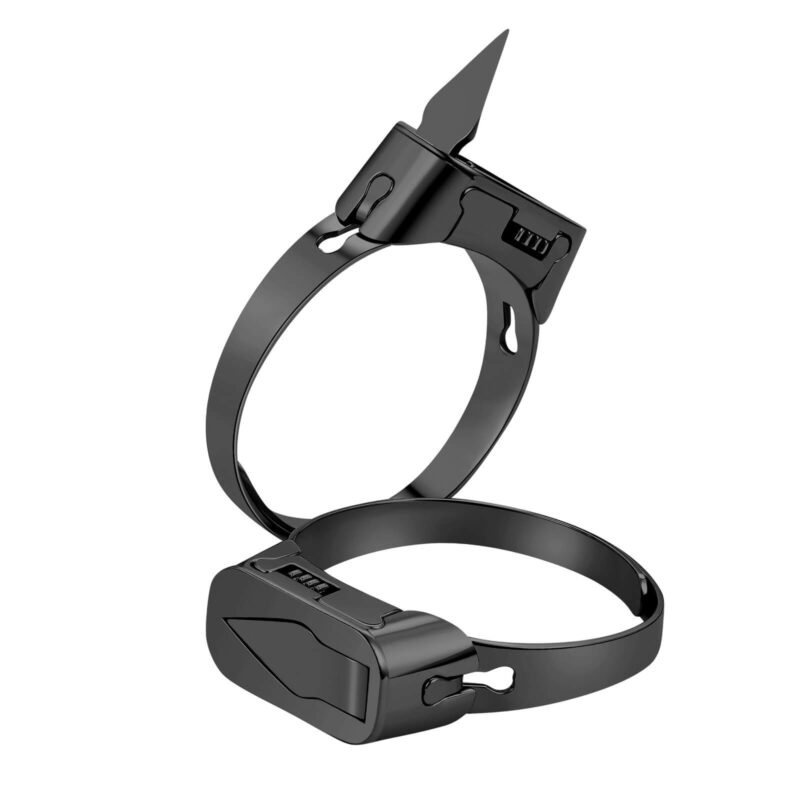Tasers are powerful self-defense tools designed to stop attackers using electricity. But how do Tasers work? Let’s break it down in a simple way, explaining how they function, their voltage, and the difference between police and civilian Tasers.
What Is a Taser Gun?
A Taser is an electroshock weapon that uses electricity to temporarily disable a person. It is commonly used by law enforcement and civilians for self-defense. Unlike stun guns, which require direct contact, a Taser fires two small darts connected to wires that carry an electrical charge.
How Does a Taser Work?
When a Taser is fired, two small probes shoot out and attach to the target’s skin or clothing. These probes are connected to the Taser gun with thin wires. Once attached, the Taser sends an electric current through the wires into the body, disrupting the nervous system. This causes muscle contractions, making it hard for the person to move.
The electric shock does not cause permanent harm, but it is extremely painful and immobilizing for a short period. This allows police or civilians to escape from danger or control a threat.
How Many Volts Is a Taser?
Tasers work by delivering high-voltage, low-amperage electricity. But how many volts are in a Taser? The voltage depends on the model:
- Civilian Tasers: Usually deliver between 50,000 volts and 100,000 volts at the start, but only a fraction of that actually enters the body.
- Police Tasers: Standard-issue law enforcement Tasers typically generate 50,000 volts but deliver a pulse that affects the nervous system more effectively.
- High-powered Tasers: Some models can reach up to 150,000 volts, but the actual electrical current is what truly incapacitates a person.
Despite the high voltage, the amperage of a Taser is very low—typically less than 3 milliamps—which is not enough to cause lasting injury.
How Do Tasers Incapacitate a Person?
Tasers work by affecting the body’s nervous system. When the electric shock is delivered, it interferes with the signals between the brain and muscles. This results in:
- Loss of muscle control – The person can’t move properly.
- Extreme pain – The shock is painful, making it hard to resist.
- Temporary paralysis – The person may fall to the ground and be unable to stand for a short time.
This effect lasts for about 5-30 seconds, depending on the Taser model.
What Is the Highest Setting on a Taser Gun?
Most Tasers come with a fixed setting, but high-powered models may have multiple modes. The highest setting on some Tasers can deliver over 100,000 volts, but the goal is still the same—temporary incapacitation without permanent harm.
Police Taser vs. Civilian Taser
There are key differences between police and civilian Tasers:
- Range: Police Tasers can shoot up to 35 feet, while civilian models usually have a range of 15 feet.
- Duration: Police Tasers have a standard 5-second shock, but some can be extended if needed.
- Power: While both deliver about 50,000 volts, police models have a stronger electrical pulse, making them more effective at stopping a threat.
Conclusion
Tasers are effective self-defense tools that use electricity to stop threats. They work by firing two probes that send an electric current into the body, disrupting muscle control and temporarily disabling an attacker. While police and civilian Tasers differ in range and power, both are designed to provide safety without causing permanent injury.
Understanding how Tasers work can help you make informed decisions about self-defense and personal safety.
Frequently Asked Questions (FAQs)
Q: What is a Taser gun?
A: A Taser gun is an electroshock weapon that uses electricity to stop a person by disrupting their nervous system.
Q: How many volts is a Taser?
A: Most Tasers deliver around 50,000 volts, but only a small portion actually enters the body.
Q: How does a Taser work?
A: A Taser fires two probes that send an electric current into the body, causing muscle contractions and temporary paralysis.
Q: What is the highest setting on a Taser gun?
A: Some high-powered Tasers can exceed 100,000 volts, but their effectiveness depends on pulse strength, not just voltage.
Q: How many volts is a police Taser?
A: A police Taser typically delivers 50,000 volts with a strong electrical pulse designed to stop a threat effectively.
Top rated products
-
Open Silver Stainless Steel Ring with a Knife
Original price was: $73.30.$54.98Current price is: $54.98. -
Silver Titanium Steel Defender Ring with Knife
Original price was: $119.98.$89.98Current price is: $89.98. -
Tactical Self-defense Titanium Alloy Pencil
Original price was: $112.40.$84.30Current price is: $84.30. -
Polished Pointed Self Defense Kubaton Keychain
Original price was: $26.54.$19.98Current price is: $19.98. -
Shining Silver Self Defense Ring Jewelry
Original price was: $123.98.$92.98Current price is: $92.98. -
Bling Kubaton Self Defense Keychain
Original price was: $26.54.$19.98Current price is: $19.98. -
Open Black Stainless Steel Rings with Knife
Original price was: $73.30.$54.98Current price is: $54.98. -
Stainless Steel Door Extra Lock for Safety
Original price was: $21.32.$15.99Current price is: $15.99. -
Open Golden Stainless Steel Ring with Knife
Original price was: $73.30.$54.98Current price is: $54.98. -
Multifunctional Mini Lipstick Knife
Original price was: $29.32.$21.99Current price is: $21.99. -
Classy Diamond-studded Self Defence Cat Keyring
Original price was: $28.54.$19.98Current price is: $19.98. -
Open Rose Gold Stainless Steel Goguard Ring with Knife
Original price was: $73.30.$54.98Current price is: $54.98. -
Fox Ears Self Defense Keychain
Original price was: $22.48.$16.86Current price is: $16.86. -
Golden Titanium Steel Guarded Ring with Knife
Original price was: $119.98.$89.98Current price is: $89.98. -
Fox Keychain Defense Tool With Sharp Ears
Original price was: $23.37.$17.52Current price is: $17.52.





















